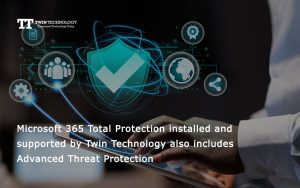November 30th 2018 marks the 30th annual Computer Security Day. Its launch in 1988 came before computing even became mainstream, making it one of the earliest reminders of the threats facing modern technology and data.
Now, thirty years on from its creation, the threats facing computers and data are more significant than ever. The sensitivity and volume of data grows each year and with that, more attacks are imminent. According to a survey by IDC and Zerto, in the past year, 77% of businesses have experienced a malicious attack, 89% of which were successful. This demonstrates just how prevalent these security threats are.
Computer Security Day is the perfect time to complete basic security checks and make sure your devices are protected. Below are a few things you may consider doing today in order to protect your data:
1) Familiarise yourself with your security policies
Regardless of the layers of protection security implemented, the weakest link is more than likely the people involved. In order to stay up to date on all security, read your workplaces computer security policy again. Even if you’ve already read it before, it may have been updated, or you may have forgotten important parts of it. Read it for a refresher. If you are not exposed to security breaches and tricks scammers may use, it is important to make sure you educate yourself and your employees enough to be able to spot anything suspicious.
2) Check (or recheck) your devices for software and program vulnerabilities.
Use the tools at hand to keep your computer software, applications, and programs in tip top shape.
-
- When did you last change your password? Do it today if you can’t remember; make sure that they are strong and not shared or written down.
- Do a virus sweep and remove any that you may find.
- Delete unneeded files. These use memory and also create clutter which makes it harder to find or spot problems and provides more potential “gateways” for viruses to enter through. Clean ups should be done regularly.
- Get rid of your Adobe Flash cookies.
- Examine the audit files on your computers.
3) Back up your data
Organisations not need to be prepared for attacks, but also for what happens after a disruption. They will be judged not only on keeping people out and data safe, but also on how quickly they are back to functioning as normal. Make sure that all data is backed up on every computer you own, both business and personal. If you don’t already back-up regularly, make today the day to draw up a plan to remind yourself to make regular back-ups, or use a program that will do this for you automatically.
- You should develop a total recovery plan for all computer systems that might need one.
- Consider having several sources of back-up – online, cloud, USB sticks, hard drives, etc.
- Check that trouble logs are in place on each computer and are being used and followed up.
4) Ensure the right technologies are in place to protect your devices.
Despite cloud-based applications making businesses more flexible and efficient, many popular cloud applications provide little visibility or control over how sensitive data is managed after it has been uploaded. This makes cloud security very important, before choosing a policy, read and re-read it to make sure that after uploading sensitive data, you have visibility and control as well as ensuring the corporate infrastructure is not open to the public internet.
5) Update computer security training manuals regularly
If you run an organisation, today could be the best day to give mini computer security sessions to staff and other people on this day. Updating the manual could give you a refresher on all protocols as well as highlight any problems you may have had in the past year.
- Include all issues of privacy, use of social networking sites such as Facebook and Twitter in a workplace context, etc. Be sure to discuss ethics and accountability for workers using external websites.
- For those working from home or who use computers at home, read up on security concerns related to using social networking sites and change your settings to protect yourself.
- Know how to spot and avoid falling for online scams such as phishing, hoax emails, pretexting, etc. Teach members of your family, community, and co-workers how to spot these scams too.
If you would like to discuss how to best protect your business, get in touch with us today.





